Night attack destroyers in the Russo-Japanese War. Ending
On the night of 20 on June, 2 of the destroyer attacked the cruiser Pallas, who was on patrol, but were found approximately on the 20 cable from the ship. However, the destroyers got close and fired 2 mines, one of which turned out to be faulty (surfaced and stalled in place).
On the night of June 25, the duty cruiser Askold was attacked, while domestic sources claim that the Japanese destroyers fired 3 mines. The Japanese do not confirm this, speaking only of artillery fire, while it must be said that the Japanese destroyers (as in the case of “Pallada”) were found approximately in 20 KBT from the ship.
The following attempts to attack the Russian patrol ships were made on June 27 and 28, however, there is a strong feeling that ours got mixed up and in fact there was only one attack on June 28. The fact is that the description contained in the "Work historical commissions ”, in a strange way duplicates each other - the same cruiser is attacked, by the same number of destroyers, but in one case (June 27) they belong to the 16th detachment of destroyers, and on June 28 - to the 6th. Japanese sources indicate one attack, which took place on the night of June 28: 4 destroyers divided into two and tried to approach the outer raid from different directions - from Liaoteshan and from Tae Bay. The former were able to fire two mines on the Diana cruiser from a distance of 600 m, after which they retreated, the latter were discovered and fired before they were able to launch an attack and were also forced to leave. It is alleged that firing at destroyers Nos. 57 and 59 from a cruiser and batteries started at a distance of 45 cables, however, they managed to get close to 3 cables at most, launched mines and left.
“The work of the historical commission” also describes the shooting of the Russian ships and the 29 and 30 June destroyers, but apparently there were no torpedo attacks at that time — the Russians fired at the destroyers or attempting to mine the external raid.
Luck smiled on the Japanese on the night of July 11 - two of their mine boats, firing four mines at the anchored destroyers "Storm", "Lieutenant Burakov" and "Combat", achieved one hit in the "Lieutenant Burakov" (died) and "Combat "(Damaged). The attack was carried out at about 2 a.m., from a distance of about 400 m. Two days later, the Russian sailors tried to take revenge - a mine boat from Pobeda entered the Sikao Bay, where, presumably, the Japanese destroyers stood. Here, at 02.30, from a distance of 15 kbt, he found a standing two-pipe Japanese destroyer and, approaching him at 1,5 cables, he launched a mine. However, at the time of the attack, the Russian boat was spotted, the destroyer set off and the mine passed under his stern, after which the destroyer left. It is possible that this was an optical illusion - the Japanese "Official History" does not mention this episode. Yes, and it’s strange that the ship should not be anchored, and if it was, how would it be able to set off so quickly? And no less strange is that, upon seeing the Russian boat, the destroyer made no attempt to shell him. In any case, the mine was used up in vain.
On the night of 28 on 29 in July, the 1904 of the Russian squadron, after an unsuccessful breakthrough to Vladivostok and the death of V.K. Witgefta, has undergone numerous attacks by Japanese destroyers. Circumstances to a certain degree favored mine attacks: it was dark in about 20.15, while the night was moonless. According to eyewitnesses, a large ship was seen at a distance of 10-15 cables, the destroyer was no more than 5-6 cables.
Justifying its name, the first Russian squadron attacked the 1 squadron of fighters - it overtook the Russian squadron and tried to attack it now on countercourses, firing mines with 4 (the attack began around 21.45). 2-th fighter squad tried to join 1-th, but did not succeed in this because of the strong waves, why was forced to look for the enemy on their own. - he discovered a Russian squadron. Around midnight (approximately in 23.45) he found Peresvet, Victory and Poltava, three destroyers attacked Russian ships with three mines. Probably, it was during this attack that a mine got into “Poltava”, but it did not explode.
The 3 fighter squad discovered the Russian ships tentatively at 22.00 (most likely it was Retvizan), but due to the fact that it was forced to change course to avoid a collision with another detachment of Japanese destroyers, he lost sight of the Russians. He managed to find the Russian squadron again in 04.00 in the morning of July 29, while the detachment itself was noticed: the battleships “Poltava”, “Victory” and “Peresvet” were turned away from the enemy, developing a heavy fire. As a result, 3 destroyers of the 3 squad released 3 mines "somewhere in the wrong direction", and, considering this duty fulfilled, they left the battlefield.
4 fighter squad showed great perseverance - he even before it got dark, tried to get close to the Russian squadron, but was driven off by fire, while the "Murasam" had damage (the court on the description of the Japanese - technical, not due to hitting the Russian projectile) . He fell behind, and the remaining three destroyers still twice in the period from 20.20 and, probably, to 20.50 tried to attack the Russian battleships, but every time they came under fire, they retreated. Then, around 20.55, they attacked again, but unexpectedly found themselves between two fires, fixing two Russian ships to their left, and another one to the right of the nose (most likely they were Pallas and Boyky, but the third ship to the Japanese I could even dream). This time 4 mines were released, after which (and already much later) Murasame managed to attack Retvizan with a mine.
5 fighter squadron in 19.50 was in the path of "Askold" and "Novik" and, being forced to evade such an "uncomfortable" target, lost the Russian squadron from view. Then, after a long search, the detachment, apparently, was able to detect the main forces of the squadron, and release four mines around them around 23.00. In the future, three of the four destroyers were able to release one more mine - “Yugiri” for the battleship of the type “Sevastopol” (in July 04.13 29), “Siranui” for “Retvisan” (although most likely it was “Peresvet” or “Victory”) , and, finally, “Murakumo” in “Pallada” or “Diana”.
1-th detachment of destroyers, while long at sea, heavily squandered coal. At night, the detachment broke up with 4-s Russian destroyers - the Japanese did not attack them, as they were looking for the main forces of the Russian squadron. However, luck only smiled on one of them - in 21.40, the destroyer №69 fired a mine in Poltava or Sevastopol.
2-th detachment of destroyers pursued failures - two destroyers confronted, why №37 was forced to leave "for winter apartments" in the Far. The remaining three ships went on the attack, but one of the destroyers "caught" a Russian projectile (by the way, "Official History" believes that it was a torpedo hit) and the second led him in tow. So the only ship that could still attack the Russians was the destroyer №45, which fired a mine on a two-pipe Russian ship - alas, no other data about this attack (including the time it was carried out).
Three destroyers of the 6 squadron were lost in the dark, so they looked for and attacked the enemy on their own, and the fourth, due to a breakdown, came out of the Dalny late, initially acting at its own peril and risk. At the same time, the destroyers №№57 and 59 did not find the Russian ships, but the other two fought "for themselves, and for that guy" - both made two attacks, while the number 56 near 21.00 twice attacked a cruiser "Diana" with mines, and № 58 first attacked one of the Russian battleships with a mine, and then tried to get closer to either Diana or Pallada and three torpedo boats, but, being fired, did not succeed, having limited to retaliatory artillery fire.
The 10 Squad fought ... and it is completely incomprehensible to whom, since around midnight he managed to find "Tsesarevich", "Retvisan" and three torpedo boats "- of course, nothing like this could have happened, because Tsesarevich and Retvisan" By that time, they had already dispersed - with the onset of night, the “Tsesarevich” went into a breakthrough, while the “Retvizan”, having overtaken the main forces of the squadron, left for Port Arthur. However, according to Japanese data, the destroyer №43 attacked Retvizan’s mines, and then the “Tsarevich”, No.42 - “Retvisan”, No.40 - the “Tsarevich”, and No.41 - also the “Tsarevich”, and then something else. In general, with whom the 10 th squad fought (and whether it fought with anyone at all) is difficult to say, but the 6 min was spent.
The 14 squad spent in 5 mines attacks - Chidori, Manadzuru and Kasasigi attacked a “Diana” type vessel (at different times), in addition, Manadzuru then attacked the Tsarevich, and did the same Hayabusa.
Of the four destroyers of the 16 squadron, only “Sirotake” (one mine along the “Retvisan”) managed to get out, No. XXUMX (one mine into an unknown Russian ship). With the 39 th detachment of the destroyers, things were better: three of the destroyers managed to get into a torpedo attack three ships: No. XXUMX fired at a “Diana” type vessel, or rather “somewhere in the wrong direction”, because they noticed on the Russian cruiser the destroyer trying to make way for them and turned away. As a result, No.20 tried first to lie down on a parallel course (there was not enough speed to catch up with the Russian ship), and then, after it, released a mine. No.62 attacked the Tsesarevich with a mine, and No.62 first attacked the Tsesarevich, and then, around the 64 hours of the night, a battleship of the Poltava type, in total - 65 torpedoes.
But the description of the actions of the 21-th detachment of the destroyers, alas, is not entirely clear. Japanese sources report that three destroyers of this unit discovered the Russian squadron shortly after 20.00 and all went on the attack. However, it follows from the following description that one of them (No. 49) did not detect the enemy, and No. 44, attacking an unknown ship, subsequently, on 01.10 on July 29, shot again with a Peresvet or Victory mine, and that the third detachment ship , №49, shot mine for a single-mast three-pipe ship ("Novik"? Rather, an optical illusion). But it is unclear whether these events took place already after the first attack, or whether the description includes her too: therefore, it is worth saying that the 21 squad used up either 3 or still 6 minutes.
Thus, we conclude that in the night battles with 28 on 29 July 1904, the Japanese destroyers spent 47 or 50 mines, however, it cannot be argued that this is exactly the exact meaning - in other sources you can find 41 or even 80 mines . The latter is still doubtful - we can assume that the authors, indicating this number, consider the number of attacks that could be made by a two-torpedo salvo, while the Japanese, in almost all known cases, fired a single torpedo. In any case, the result was okolonulevym - in the Russian ships recorded only one hit, while the mine did not explode.
On this night fighting using mine weapons in Port Arthur, 1904 calmed down until November, when, on the night of 26, November, the squadron battleship Sevastopol moved from its berth to the White Wolf bay, where it anchored. After that, the Japanese launched six attacks, which involved a total of 30 destroyers and 3 mine boats in order to undermine the Russian battleship.
I must say that Sevastopol, thanks to the efforts of the Russian sailors, was perfectly protected from mine attacks. The fact is that his parking in the bay was a well-equipped position: in addition to him, the gunboat “Brave” and 7 of Russian destroyers were also in the bay, and most importantly (and perhaps more importantly, the approaches to the bay were controlled by ground searchlights. Of course, there were also land artillery; the battleship itself was defended by regular mine networks on the ship’s sides; however, in addition, another network was hung on an improvised “tripod”, covering the Sevastopol’s nose from attacks. Thus, the battleship was, as it were, in the rectangle of anti-submarine networks, only food remained unprotected. But at the stern of the ship there was a gunboat “Brave” and at least two of the seven destroyers, so it would be very difficult to approach it (passing between Sevastopol and the coast). In addition, Bon was used to protect the battleship, which had previously covered the entrance to the harbor of the White Wolf.
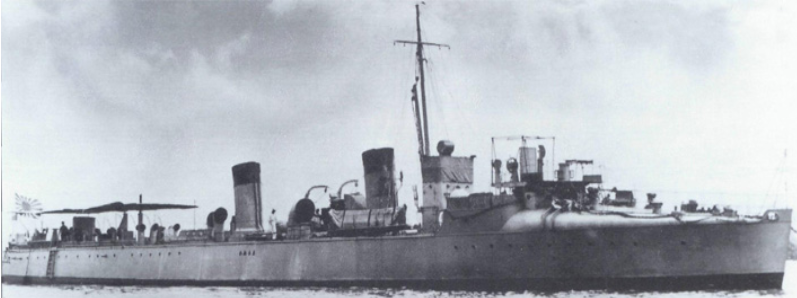
The first attack was made on the night of November 27 and, frankly, was more like an imitation of violent activity: three destroyers of the 9 squad at the beginning of the twelfth came to the bay where Sevastopol stood, but were illuminated by searchlights from land. Launching three mines in the "vague outline of the ship on the NWN", the destroyers retreated. Following the 9 squadron, the 15 squadron approached, unable to attack at all (the searchlights blinded the 1 squad, and the second did not find the enemy) and left without using a weapon. On the Russian ships, this “mine attack” was not noticed at all.
The second attack took place on the night of November 29. In 00.45, the 15 squad of destroyers tried again, but the mines managed to release only the first three - the fourth, having fallen into the light of searchlights, stopped seeing the target and attacked Sevastopol. Then, approximately at 01.35, two minelayers tried their luck, also attacked, were illuminated by searchlights and fired upon ground artillery, fired 2 mines in the direction of Sevastopol ("to the very center") and retreated. What was common with this attack from the previous one was that they did not even notice Japanese mines on Russian ships.
The third attack took place on the night of November 30 and began with the fact that at three o’clock at night 4 destroyers of the 20th detachment passed 1 m (500 cables) from Sevastopol, with a mine being fired from each of the Russian battleships. True, there was no sense from this, but two destroyers were badly damaged by artillery fire. The 8th detachment four times tried to get closer to Sevastopol at the distance of a mine shot, but each time it was discovered, highlighted by searchlights and fired upon, which is why it could not enter the attack. But luck smiled at two mine boats, which already in the morning (closer to 14) managed to get close to Sevastopol unnoticed, the distance did not exceed 05.00 meters. Both of them attacked, and both mines, in general, hit, but not in the ship, of course, but in mine networks. And if one mine, entangled in the starboard network, drowned, then the second, having hit the nasal network, exploded. As we said earlier, on Russian ships fleet protection of the ship’s nose by the mine network was not provided (that is, placing the network ahead of the course, perpendicular to the stem), and the defense of Sevastopol was an improvisation. She guarded the ship worse than onboard networks, and as a result of the explosion, the bow compartment (which housed the torpedo tube) was damaged and flooded. The width of the gap made up to 3 feet, but nevertheless these damages were not comparable with those that a mine would have done if it hit the ship’s hull.
The fourth attack was made on the night of December 1. By this time, the battleship pulled up to the shore aft, and along the sides were additionally covered with booms. Now only the nose, which was not too securely covered by the mine network, remained a relatively vulnerable point of the ship. And again, we can talk about the attack rather than on the result, but “for a tick” - despite the fact that the 10 squad and another combined squad from 6 and 12 squadrons of the destroyers were sent into battle, they could attack get out only four ships that fired 4 mines according to Sevastopol. On the battleship of these mines again was not observed. To justify the Japanese destroyers, one can only say that on this night there was a strong snowstorm, which made the attack much more difficult. Visibility was so bad that the destroyers went on the attack with open fires (!), But even so quickly lost sight of each other anyway. Most likely, the launch of the mines was made not by the battleship, but by something that the Japanese took for it, and the price for this was the destroyer №53, which exploded in a mine and died with the whole crew.
The fifth attack took place on the night of December 2. The weather improved somewhat and the Russians, anticipating the next assault, prepared for its reflection. This time the destroyers were placed along the bay, dividing it, in front of the “Sevastopol”, with the flank lights turned on in order to provide a “light strip” on the way to the battleship. In addition, two mineboats stood at the nose and side of the "Sevastopol", in full readiness to counterattack the Japanese destroyers. No doubt, it was not for nothing that the Russians had prepared - it was on this night that the Japanese launched the most massive (23 destroyer and 1 mine boat) and, more importantly, a decisive attack.
The first (in 23.55) consolidated detachment joined the consolidated detachment from the 6-th and 12-th destroyer detachments, while 4 mines were fired. It’s not a fact that all of them were sent to Sevastopol, because besides him there were also the canted ship “Brave”, the steamer “King Arthur” and the port vessel “Strong” whose silhouettes are theoretically (and in conditions of very poor visibility, except for darkness and snow also interfered with the light of searchlights) could be mistaken for an armadillo. Two destroyers were damaged by artillery fire. Following the destroyers, a mine boat from Fuji attempted to attack, but was discovered and driven away by artillery fire. The latter, however, did not lose his head, but tried again later, firing a mine at 03.30, was again fired upon and left.
But even before this, the main attack took place: “Sevastopol” consistently attacked the 15 th detachment of the destroyers, a mixed detachment from the 2-th and 21-th detachments, the 10-th detachment of the destroyers with the addition to it # 39, and then - the 14 th 9 th units. The destroyers of the main 15 squadron were found and fired at 01.47, but they still attacked, and behind it, in the order listed above, the rest of the units entered the battle. In total, they produced 20 mines, and it is reliably known that one of them was sent not to the “Sevastopol”, but to the gunboat “Brave”. Accordingly, during this night the Japanese released 25 mines, of which a maximum of 24 was sent to Sevastopol. The distance from which the Japanese destroyers fired was rated by Russian ships as 5-10 cables. At this time, the Japanese acted quite decisively, and the result was not slow to affect.
5 mines got into fencing networks of “Sevastopol”, 4 exploded from them (and, apparently, we are talking about mines that hit the ship’s anti-torpedo networks, the same ones that got into booms are not taken into account, although this is the author’s opinion may be erroneous). Thus, if the battleship had not had this protection, he would have been hit by four, or even five torpedoes, which gives firing accuracy (taking into account the mine that did not fall into the “Brave”) at the level of 16-20%. But the networks turned out to be sufficient protection, so only a single mine was damaged, which exploded in the nasal network - this time the ramming battleship was flooded.
But, of course, the other side had a similar effect: during the attack, one Japanese destroyer was destroyed (the Japanese believe that it was done by artillery fire), three more were put out of action, many other destroyers, although they remained operational, but also had damage.
This description of the battle is composed mainly of Japanese sources, but if we add Russian information to them, it turns out to be quite interesting. According to the “Work of the Historical Commission”, the Russian ships in this battle fired 2 mines: one from the mine boat from the battleship Victory, and one from the destroyer Angry, both of which fell. Most likely, it was like this - the mine boat didn’t get anywhere, but the “Angry” attacked the lost destroyer No. XXUMX (which the Japanese consider dead and note its loss of progress) and destroyed it. Thus, the effectiveness of Russian mine firing was 42%, which is significantly higher than the Japanese.
However, it is possible that in fact the Japanese have shot out this time much more effectively than the 16-20% we have indicated. The fact is that the Work of the Historical Commission reports numerous torpedo attacks of the Watchdog destroyer, with many mines passing under the destroyer's keel and exploding from attacks on reefs. The fact is that this destroyer was on the flank, from where the Japanese attack and the searchlights were coming, so that the Japanese destroyers first saw the Watchdog. A total of 12 Japanese mines fired at the Watchdog were counted, and if this figure is correct (while the torpedoes passed under the destroyer's keel), then the accuracy of firing at Sevastopol and Brave is 30-38%. Most likely, in fact, a smaller number of mines were fired at the Watchdog, but it is still likely that the accuracy of mine firing at Sevastopol varies within 20-30%.
The sixth attack. It took place on the night of December 3, and, again, was held very strongly. This time it was snowing heavily, but if earlier (according to the Japanese) it prevented their destroyers from detecting the enemy, now it prevented Russian searchlights from controlling the water area and the entrance to the bay. Such is he, this snow - it prevents those who shoot torpedoes from barely noticed, obscure silhouettes, in order to leave immediately and help those who go on the attack, defying the weather nuances. As a result, the Japanese destroyers entered the White Wolf Bay and fired torpedoes at Sevastopol from various sides.
Around 03.00 3 in December, “Sevastopol” attacked the 4 of the destroyer of the 2 squadron, firing 4 mines together, were fired in response, and one (# 46) was damaged. Then, “Sevastopol” was attacked by a single destroyer №44 from the 21 squad (he was the only one from this squad that took part in that battle), fired a mine and was also damaged. The next was the 14 Squad. His lead destroyer, Chidori, did not see Sevastopol, and tentatively on 04.00 fired 2 mines, one on the steamer King Arthur, the second to the Russian destroyer. The next “Hayabusa” attacked with a mine “Sevastopol”, and “Kasasagi” and “Manadzuru” - “Sevastopol”, “Brave” and “King Arthur”, thereby releasing at least 3 mines. These destroyers were also shot at, but only Manadzuru was hit.
In total, the Japanese destroyers spent at least 11 mines in this attack, of which, probably, 7 - at Sevastopol. At the same time, the Russian battleship received 3 hits: one mine hit the boom covering the side, the second - into the anti-torpedo network (its explosion did cause water to flow into the compartments) and the third directly into the ship itself, undermining its stern. In addition, the destroyer "Watchdog" suffered from the torpedo "Chidori" (most likely this particular Japanese ship was successful). Mina, you can say, "clicked" Watchdog "on the nose" hitting him almost in 15 centimeters from the stem. An explosion thundered, but the destroyer did not sink, although the ram bay was filled with water. His commander made an absolutely correct decision - seeing that his ship was blown up, he did not wait for the damage analysis and jumped ashore, from which the Watchtower was then safely removed.
The overall effectiveness of the Japanese mines in this last attack was more than 36%. At the same time, 7 mines were released directly into the Russian battleship with three hits, that is, almost 43%. But it is possible that the effectiveness of firing at Sevastopol turned out to be even higher, since according to Russian data, in addition to the above ships, three or even four mines were fired on the Boiky destroyer, and they could be among those that we "recorded" as released in "Sevastopol".
A total of at least 6 mines were launched for 49 night attacks undertaken by the Japanese to undermine the battleship Sevastopol, of which 11 reached the target (22,44%), one of which hit the Storozhevoi destroyer, one - Sevastopol, the rest of 9 got into anti-torpedo nets and bon, while the explosions of three of them led to the flooding of the battleship compartments.
Later night mine attacks against Russian ships were not made until the Tsushima battle itself, which we will not consider in this series of articles.
So, what general conclusions can we draw on the use of mine weapons in night attacks during the defense of Port Arthur? On the one hand, it seems that it is necessary to state, poorly trained, of the Japanese destroyers. In the battles listed by us, the Japanese spent about 168 mines, while only 10 achieved effective hits - 3 mines in Retvisan, Tsesarevich and Pallas at the very beginning of the war, 2 mines - in the destroyers Leutenant Burak and Fighting during the July 11 mineboats attack, the 4 mines - into the battleship Sevastopol (one direct hit into the stern, as well as two hits into the nasal anti-torpedo network and one into the anti-torpedo network of the right side) and 1 mine - the destroyer “Watchdog”.
Thus, the overall effectiveness of the Japanese torpedo weapons did not exceed 5,95%. Conversely, if we take the effectiveness of Russian weapons, then it surpasses all imaginable limits - having spent 12 mines in night battles, Russian sailors achieved at least 6 hits (50%!).
Such a ratio may seem very strange, so let's take a closer look at it.
The first - in some cases, the Japanese attacked ships protected by anti-torpedo networks (“Sevastopol”), and at night after the 28 battle of July 1904, they achieved a hit of mines in “Poltava”, but the torpedo didn’t explode - however we cannot put a technical fault on the mines blame to the crew of the destroyer. Having introduced the corresponding corrections, we will get not 10, but 17 hits (additionally one to Poltava and six to Sevastopol), thereby increasing the percentage of hits to 10,12%.
Secondly, if we consider exactly where the Japanese training failed, then we will see that during the defense period of Port Arthur, the Japanese destroyers did not know how to hit ships at sea. In the period we reviewed, the Russian squadron went to sea twice, 10 June and 28 July 1904, while in both cases (on the night of 11 June and on the night of 29 July) she was attacked by destroyers. At the same time, at least 70 mines were spent, of which 23 on the night of 11 July (another 16 mines were released on anchored ships on the outer roadstead) and 47 - on the night of 29 July, but the result was a single hit in "Poltava", that is, the efficiency is only 1,42%. Why is that?
The weak organization of attacks played a role here - in fact, fighter and destroyer detachments were left to their own devices and attacked without any plan, often even within the same unit, the destroyers acted independently. In this case, surprisingly, the detection range of destroyers exceeded the range of a torpedo shot - it is reliably known that at night from 28 to 29 in July, the destroyers were visible on 5-6 cables, but it was probably the same way on the night of 11 in June. Accordingly, the Russian ships, seeing the destroyers aspiring to get close to them, simply turned away from them, opening fire - very often in similar situations, the Japanese destroyers “for conscience clearing” fired after them, almost without a chance to hit the target, and left the attack. In addition, flashes of torpedo shots (powder was used to eject torpedoes from vehicles) were clearly visible, and because of the phosphoric nature of the water, traces of mines were clearly visible, with the result that Russian ships had a good opportunity to evade torpedoes released from them.
At the same time, the attacks of ships at anchorages (and, in some cases, the destroyers who defended them, who either did not move or had a short stroke) were used 98 mines and 16 hits were reached (we will exclude the 17 hits in “Poltava" - this gives us efficiency at the level of 16,33%. But this indicator is much worse than the 50% we calculated earlier for Russian torpedoes. What is the matter?
But the matter is in completely different conditions, in which the Japanese and Russian miners had to act. As we can see, the overwhelming majority of the Japanese attacks were carried out on ships stationed on the outer roads of Port Arthur or in the White Wolf Bay. The Russian ships that were there were located under the cover of coastal batteries, and, most importantly, quite numerous land-based searchlights.
Therefore, quite often the following happened - Japanese destroyers, with a small number (consecutive attack by several troops) tried to get close to the ships guarding the outer raid and got into the light of searchlights - Russian ships and land batteries, as a rule, opened fire when standing on the outer the raid of the ships of the squadron still had at least 20 cables, but there were cases when the Japanese destroyers were found behind 45 cables. Of course, they were immediately attacked by a barrage of fire from the destroyers, gunboats, cruisers, and even larger ships. As a result, the Japanese had nothing left to do, firing torpedoes “somewhere in the wrong direction”, to run without looking back - which they constantly did, despite the “samurai code of honor” and the all-consuming desire of their crews to “die for the emperor.”
Well, cited V.K. Witgeft its squadron on the outer raid after leaving for the sea 10 June. It would seem - a beautiful, bold target, then the Russian squadron and fly to the last ship. In fact, it turned out that the Russian squadron was anchored, and the Port Arthur searchlights formed a real “cut-off zone” around it, illuminating the sea around the parking lot, but in no case its own. At the same time, the squadron was illuminated by searchlights (from time to time) only flank ships, and the rest stood with closed lights, briefly turning on the searchlight if absolutely necessary. Armadillos and cruisers bristled with numerous cannons, they were supported by land artillery. The Japanese fired on the Russian ships 24 mines (8 - while anchored and 16 - when the ships were already anchored), but how? In sporadic attacks by individual detachments on the 3-4 of the destroyer, and even individual destroyers, in conditions of disgusting visibility, when the rays of the fortress searchlights blinded the Japanese destroyers and did not allow them to discern the silhouettes of the Russian ships. When at several simultaneously attacking destroyers immediately concentrated the entire squadron, supported by ground artillery! Is it any wonder that not a single Japanese destroyer that night, according to the observations of Russian sailors, has ever become closer to the Russian ships than on the 12 cable? By the way, today it is no longer possible to determine the accuracy of shooting of Japanese destroyers in such conditions - the fact is that the parking of the Russian squadron was partially protected by booms, and it is possible that some of the 24 mines spent by the Japanese were nevertheless correctly pointed, but were stopped by barriers.
Therefore, it is not surprising that the greatest successes of the Japanese destroyers were achieved in conditions when:
1. Land guns and searchlights of the fortress did not work - the very first attack of Port Arthur, with which the war began (8 destroyers released 14 mines, 3 hits, 21,42%);
2. The attack was made outside the limits of the coastal defense of the Russians - 11 attack in July (4 mines - 2 falling into the destroyers "Lieutenant Burakov" and "Combat", 50%);
3. The attack was carried out within the coastal defense, but in weather conditions precluding its effectiveness - the sixth attack of the battleship Sevastopol (11 mines, 4 hits including one each in the destroyer Watchdog and the battleship, and 2 falling into the anti-torpedo network and Bon, one of which caused damage to the ship (36,36%);
4. The attack was carried out at least within the powerful defense of the Russians, but decisively and by large forces - the fifth attack of the battleship Sevastopol (25 mines, 5 hitting the battleship fencing, 20%, taking into account the mines that passed under the Watchdog keel, it is possible that up to 30%).
In general, it can be stated that the presence of an effective coastal defense significantly increased the protection of ships anchored, and this could only be overcome by a decisive attack by large forces, which the Japanese, in fact, dared only once during the entire defense of Port Arthur - during the fifth attack on the battleship Sevastopol.
And what about their Russian colleagues? Interestingly, the main results were achieved by our destroyers on moving ship-firefighters, from 6 the mine hits of those were 4 (another mine hit the stopped, and the already-sinking firefighter and the Japanese torpedo destroyer was sunk by one mine). But it must be understood that the conditions for this were the most favorable for the Russians, because in all six successful attacks the enemy ships went ahead without maneuvers, and most importantly: they were highlighted by the Russian searchlights, while our destroyers and mineboats remained invisible to the enemy's searchlights. In addition, in all cases, the Japanese forces in cash, consisting of several destroyers at most, could not develop strong artillery fire, and even that was often discovered after the Russian mine attack.
And now let's return to the question for the sake of which this series of articles was written: the possible effectiveness of the night-time attack of the Japanese destroyers Varyag and Koreytsa if the Russian stationery did not go to battle with the squadron S. Uriu. In this case, V.F. Rudnev remained a rather poor choice - either to anchor and put up mine networks, or not to put networks, not to get up, but to move very slowly in the water area of the Chemulpo raid (about a mile to two miles. In principle, if you count to the mouth of the river , then all three miles will be in length, but there, in theory, neutral stationaries and transports should have gone. Alas, none of these options promise anything good.
If Varyag had remained at anchor, he would not have been able to provide protection like the one that Sevastopol had in the White Wolf Bay - as we have said, spare nets from other ships were used to protect the squadron battleship. At the same time, their own anti-mine networks did not give the ship full protection - the bow, the stern and part of the side remained open.
It was impossible to move with the supplied networks, because they were not designed for this, and a network break could easily lead to winding the latter on a propeller, after which the ship lost speed. It was impossible to protect the ship with an additional net from the bow and the stern, because it required an improvised device for additional so-called. There were simply no “mine shots” on which the anti-mine network was kept, the materials for which were produced at Varyag (as far as can be judged, Sevastopol received them from the warehouses of Port Arthur), and there were no additional mine networks themselves. In addition, we see that such a structure, assembled in ship conditions, did not differ in reliability - both hits in the nasal network of Sevastopol led to the formation of underwater holes and flooding of the nasal compartment.
But the most important thing is that, remaining on the Chemulpo road, unlike the ships of the Port Arthur squadron, the Varyag and the Koreyets did not have a powerful coastal fortress behind their shoulders and could only count on themselves. Moreover, if we recall the order of S. Uriu, then it says:
That is, in other words, it turns out like this: 4 of the 9 squadron’s detachment enter the Chemulpo raid, where the Varyag will very quickly be found - it’s hard not to find a thirty-four-meter four-pipe cruiser in a two-by-four-kilometer water area.
There is nothing left for the Varyag (regardless of whether he is at slow speed or at anchor), how to open fire on the destroyers - with this he unmasks himself, and the 2 cruiser of the tactical group will be highlighted with its searchlights. In other words, “Varyag” and “Korean” in this case will find themselves in the position of Japanese firefighters who attacked the Russian destroyers: as we can see from our analysis, the accuracy of mine firing in such conditions may well be from 30 to 50%. On four ships of the destroyers, there were 9 torpedo tubes, taking into account the 12 mines spent on the Korean, there are still 2, which gives 10-3 torpedo hits to the cruiser. There is no chance of surviving such a number of hits even after having cut off the mast from the Korean and having hung his mine nets on them at the bow and stern of the Varyag. But even if something like this miraculously happens, then the Japanese have a 5 squad of destroyers in reserve, which they can also send to the attack.
Based on the above, it can be assumed that when the Japanese use the tactics of the night mine attack set forth by S. Uriu in order No. XXUMX brought to the 30 players of January, there are no chances for Varyag and Koreyets to survive in Chemulpo’s raid.
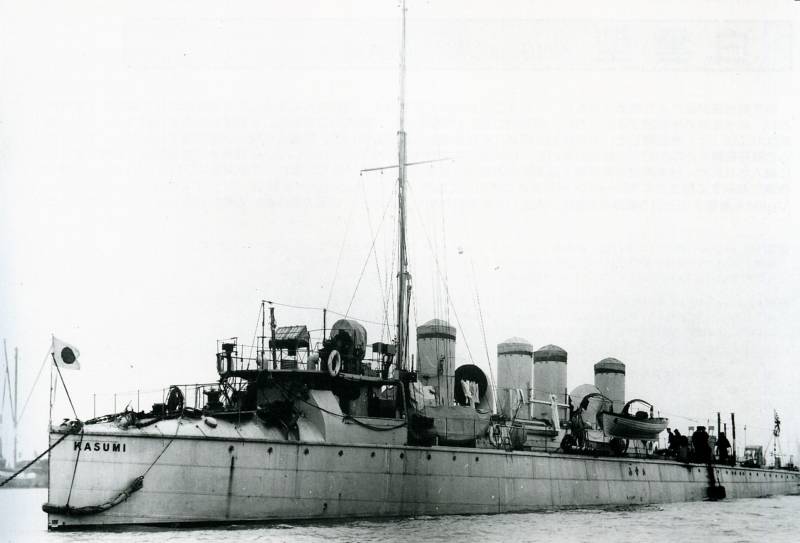
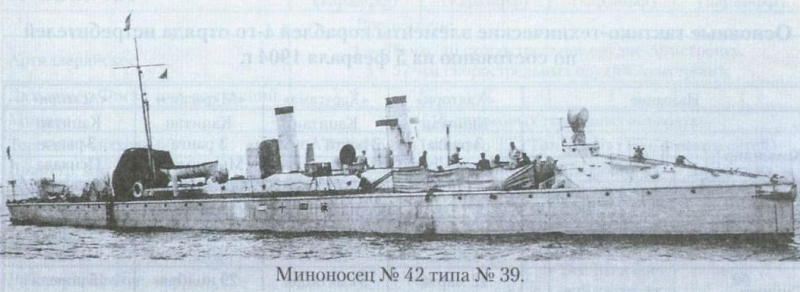
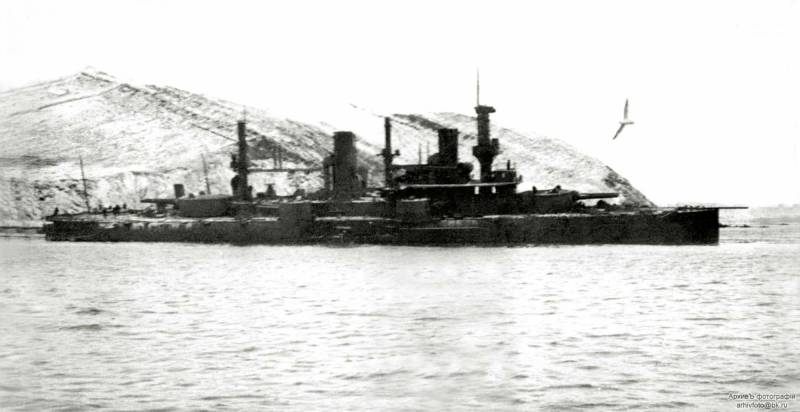
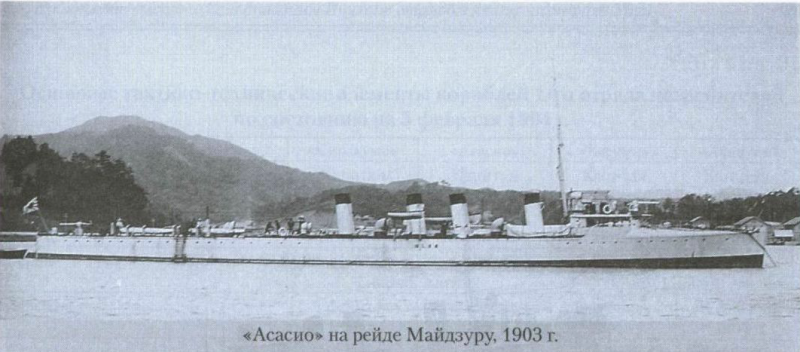
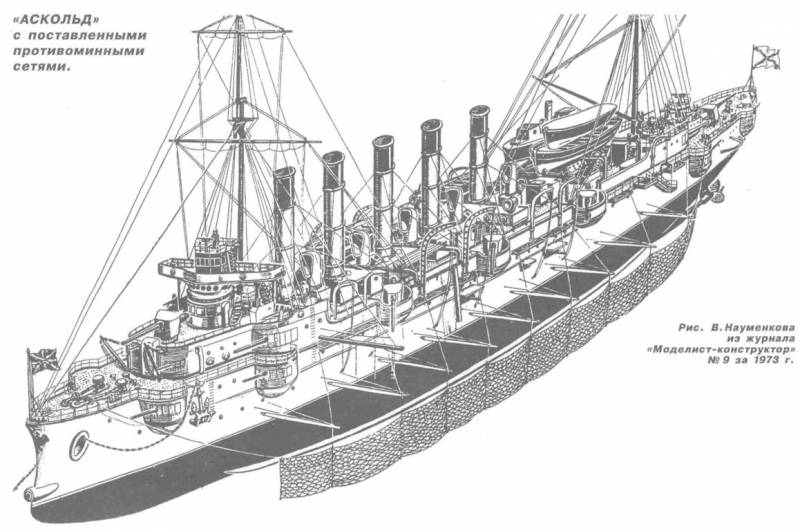
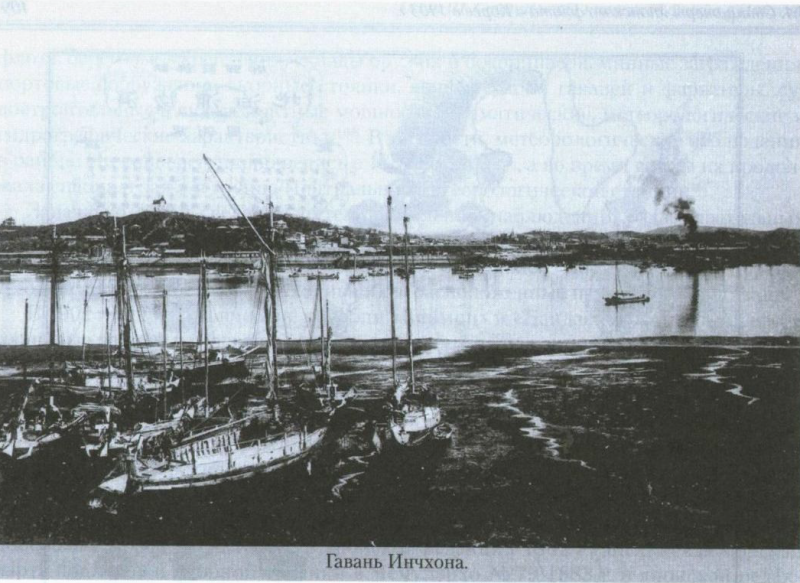
Information